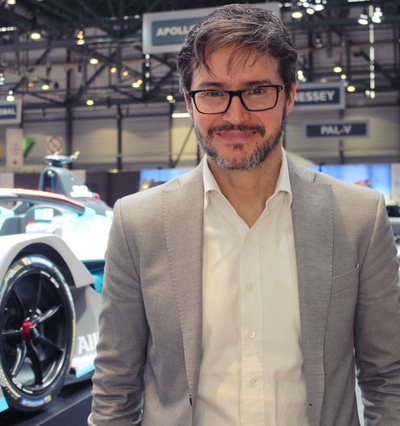- OT
- Industry
- Eyewear and lenses
- Driving and vision: “Everything starts with the patient coming to a practice”
Driving and vision: “Everything starts with the patient coming to a practice”
Essilor International’s vision and road safety vice president, David Navarro, on why optometrists are key in promoting safe vision for driving

23 September 2020
Essilor International’s vision and road safety vice president, David Navarro, talks to OT about international progress on ensuring that road users have good vision for driving.
Why is road safety a focus for Essilor?
As citizens we are all responsible for making the roads safer. Vision is a key factor in road safety but it has been absent from road safety policies for years. We have started to change that.
We partnered with the Fédération Internationale de l'Automobile (FIA) in September 2017. The FIA has created a new golden rule called ‘Check your vision.’ This is leader-to-leader collaboration. Together we are committed to sharing this message with the populations through institutions, key mobility players and of course, eye care professionals.
How will the collaboration with the United Nations Road Safety Fund support road safety?
Over the three years that this has been a focus for Essilor, we have seen that even in developed countries up to 30% of drivers have uncorrected vision. This is something that we really need to address and shows the size of the issue.

Becoming an official member of the United Nations Road Safety Fund, Essilor took active part in the third Global Ministerial Conference on Road Safety which saw an historical achievement for the optical community: a call to Governments to ensure good vision for all road users inside the United Nations’ recommendations to enhance national road safety systems in the achievement of 2030 goals. This a real incentive to generalise eye tests for everyone on the road and facilitate access to eye care.
This initiative is completely in line with the position of Essilor as a responsible leader with our mission of improving lives by improving sight.
How would you sum up the importance of good vision for driving?
At the end of the day, vision is key to perceiving your environment. Up to 90% of the information that is needed to keep safe on the road is received through the eyes.
Any innovation that we can bring to vision that can improve the way that we perceive the environment will also have a benefit for road users.
How can optometrists and other eye care professionals bring about positive change on this important issue?
We believe that we cannot reach people if we are not engaging with those who have direct contact with the patient. Everything starts with the patient coming to a practice. It is there that the message about good vision and safety needs to be conveyed. The eye care professional needs to communicate the importance of vision for driving. Optometrists are first on the frontline to be able to drive this change for a world of safer roads and better sight.In our campaign, we have key messages that we are developing. There is the notion of having a regular eye examination. We see in many statistics that people are delaying visiting the optometrist until they experience a problem that is impairing them. During this delay, their reaction time on the road is increasing and they are taking a greater risk. We want to focus on the idea that patients should visit the optometrist regularly.
We also aim to convey the importance of all the different aspects of vision when you are on the road. The eye examination needs to take into account all these different functions. Then there is the notion of light and light sensitivity as well as glare. Many accidents are linked to problems of glare. It is important for people to understand how poor vision can affect their reaction time. It may be the difference between stopping at the intersection and having an accident. The eye examination needs to cover the full scope of both correction and better managing sight. With the UN recommendation, we now all believe that good vision is crucial for all road users. Let’s drive the change.
Advertisement


Comments (0)
You must be logged in to join the discussion. Log in